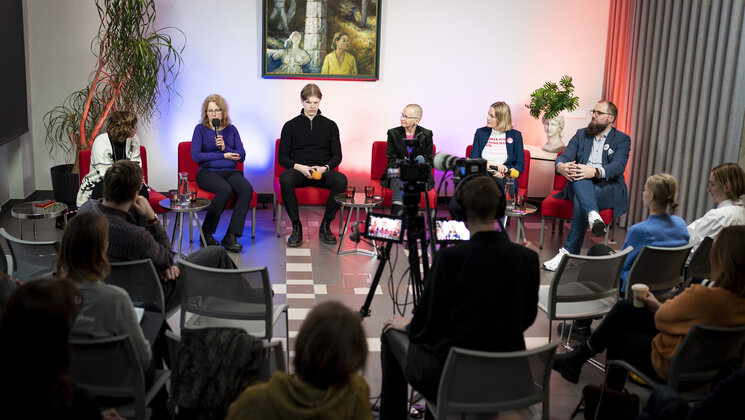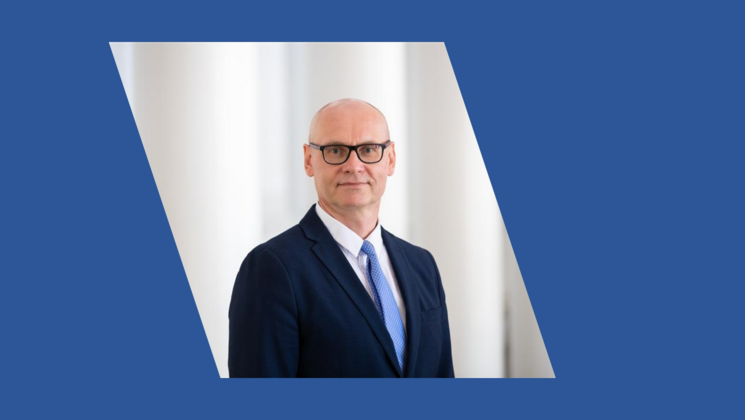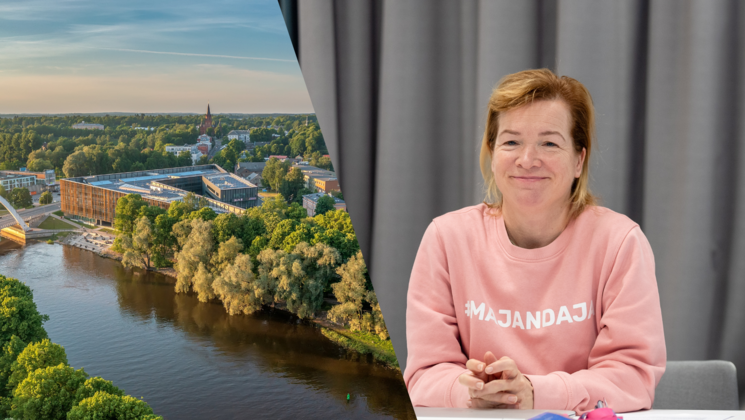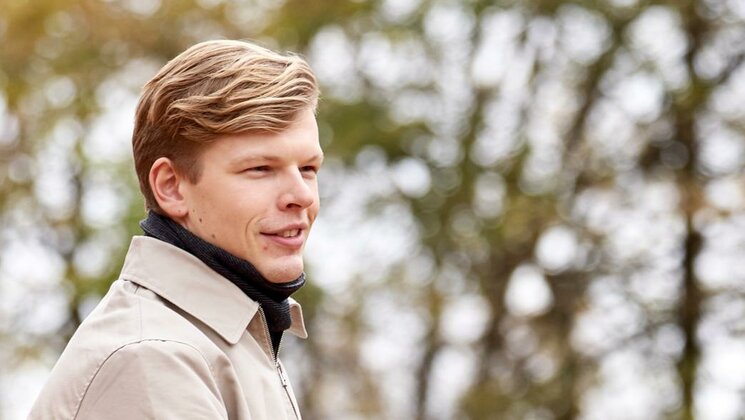University to invest in halls of residence, academic and research buildings and energy efficiency in 2024

In 2024, the University of Tartu plans to invest 17 million euros in its buildings. We spoke to Director of Administration Kstina Noormets about the university’s plans for this year and the years ahead.
The buildings of the University of Tartu cover more than 300,000 square metres or 42 football stadiums’ worth of built-up land, around a third of which is under some form of protection. The buildings are dotted around Estonia – not just in Tartu and the college towns of Narva, Pärnu and Viljandi, but also in Tõravere, on the island of Saaremaa, in Ida-Viru County and on the country’s northern coast.
This year, the university plans to invest 17 million euros or 6.5% of the total budget in its buildings. Which of your plans will have the biggest impact and cost the most?
Our biggest single investment next year will be the completion of the top-down renovation of the Nooruse halls of residence, which will give back more than 300 rooms for students by summer 2024.
As part of the European Capital of Culture year, we’ll also give Tartu two wonderful gifts, finishing the renovations to Struve House and the Old Anatomical Theatre on Toome Hill. If everything goes to schedule, the new residents of the latter – the Information Technology Office, the Institute of Genomics and the Youth Academy – will be able to move in as early as the end of February. Struve House should be ready for our Human Resources Office in spring.
We’ll be launching renovations on our Ülikooli 18a building in 2024 as well, which will mean our Grant Office finally gets to move into its new premises in 2025 once the work’s been completed. This year, our agreement with Miina Härma Gymnasium to use the Iuridicum building on Näituse Street will come to an end, after which we’ll be taking the entire complex at Näituse 13a into use for ourselves again. The Faculty of Law has been holding lectures in the large lecture halls there again since autumn, and once the rooms that are freed up after the school moves out have been renovated, they’ll be used by our Estates Office.
We’ll also be redesigning the rooms that so far have served as the canteen and kitchens in the Biomeedikum building as computer labs and classrooms and study and recreational spaces for students. As part of a development fund project, we’ll be giving the library lobby a cosy makeover to make it a more inviting space as well.
The amount that’s been budgeted for includes a lot of longer-term work, too. For instance, you’ll be initiating the design process for a new academic and research building in Maarjamõisa based on the recently selected winning entry. What other new buildings will you be working on in the near future?
We’ll be launching renovations on Von Bock House at Ülikooli 16. The Faculty of Arts and Humanities need rooms for their junior research fellows to work in, so by utilising the ones available in the basement of Von Bock House, we’ll be able to help them out on that front a little. Initially, we’d only planned to install a ventilation system, but we’ve since decided to renovate the building in full since it has so much history behind it and so that it meets the needs of modern working conditions. That includes providing it with a lift to make it properly accessible.
We’re working on ideas for the building that the School of Law uses on Kaarli Avenue in Tallinn, too – the results of the architectural competition will be announced in mid-January, and all being well, we’ll start on the design process this year. It’s a really exciting competition because the architects have freer rein than they’d normally have: only a third of the building needs to be preserved in its existing state; they can approach the rest of it however they like, including adding a couple of storeys to it if they want to.
Then there’s Pärnu College and the Viljandi Culture Academy, applying for international funding from the ‘Attractive Regional Enterprise and Living Environment’ measure to redesign their teaching and research environments. If they get it, the university will chip in as well.
You briefly mentioned one of the university’s halls of residence. The lack of places caused real headaches for new students last summer. How to solve that?
We found ourselves in a really difficult position last year because construction work meant the Nooruse residence hall couldn’t be used. But all of the more than 300 places in the newly renovated halls will be available again this year, which will alleviate the shortage.
The next thing we’re planning on that front is extensions to the halls at Raatuse 22 and the renovation of the existing building. It’s the only hall of residence we can add an extension to. When it was designed two or so decades ago, the initial plan was for it to be 25% bigger than it is now, but there just wasn’t the money for it. Now that renovations are needed, those extensions are back on the agenda. To the best of my knowledge, construction work is due to start in summer 2025.
That means none of our halls of residence will be out of use in the 2024–2025 academic year. We’ll be tackling the Raatuse building in two stages: the first one will see the extension built and one part of the existing building reconstructed, with the remainder of the building renovated in the second stage.
Quite a considerable amount of the money planned to cover energy costs in the 2023 budget ended up left over, and in this year’s budget it’s been reduced by 12%. How did that come about?
Last year we invested 6.8 million euros in energy-saving solutions, and the lower costs we incurred show that we’ve made the right choices. The biggest impact has come from taking a number of different approaches at the same time – automating the management of our technical systems, making the switch to district heating and cooling, and investing in solar farms.
Let me give you a couple of examples, the first of which literally speaks volumes: we replaced the old fluorescent lights in one of the halls in the sports club with LED lights, and our lighting bills are now a third of what they used to be, not to mention the lighting itself being a lot better. The other example is the Viljandi Culture Academy, where automating the management of its technical systems has led to a 50% reduction in its energy use.
More than half of the ventilation, heating and cooling in the university’s buildings is managed automatically now, which means we can operate them remotely with settings already programmed. Which in turn means we have to have someone in our Estates Office who knows how to program them and interpret the data, but luckily, we do – we’ve had a dedicated engineer working for us now for two years doing just that, and over time we’ll all have to learn and develop as the new technology does likewise.
Last year we got five million euros from the Ministry of Education and Research for smart investments in energy efficiency, which gave us the chance to do some things we hadn’t planned to do towards creating energy-saving solutions. One was adding a solar energy storage device for the solar farms on the library and the Delta buildings. We’ve done energy efficiency-boosting work on more than 15 buildings thanks to that extra funding.
The net effect of all this is that we’ve used around 200,000 fewer kilowatts of electricity per month last year than we used the year before. That’s equal to the amount our 10 halls of residence around the country use in a month.
Almost a third of the university’s buildings form part of the cultural heritage of Tartu and other places in Estonia. What kind of things do you have to take into consideration when you’re renovating historical buildings and cultural monuments and adapting them for research and teaching?
Maintaining and developing historical buildings is something the university is obliged to do by law, and it’s something the supervisory board keeps a close eye on. It has to be said that structures that come under the banner of cultural heritage are best kept in active use, kept alive if you like, because that way the heritage is passed on, while at the same time taking on new meaning. There’s something very pleasing about our Information Technology Office, which of all our units is the one most involved in cutting-edge solutions, moving into rooms in one of the university’s most historical buildings – the Old Anatomical Theatre.
The university is well placed to preserve heritage and make responsible use of it, which is why we have such good working relationships with the National Heritage Board and the Rescue Board. We often have to strike a balance between modern expectations and the requirements of historical heritage, but I think we’ve done a good job of it. A really good example is our heritage-listed building at Lossi 3 in the Old Town here in Tartu, which was fitted with this one-of-a-kind roofing material that functions as a solar panel but really blends in with the historical look of the building.
We’re still hoping to come up with good ideas for the renovation of the university’s church rooms at Jakobi 1. And on a personal level, I’d really like to see our stadium upgraded, but it’s not one of the priorities for the next few years, sadly. We’ve talked about it with the city, but when we actually get around to renovating it depends on lots of different factors. Partnering up with the private sector can’t be ruled out.
The university has an enormous amount of square meterage to manage, and the impact it has on Tartu is just as big. How have you found working with the City of Tartu?
The dialogue we’ve launched with its Department of Urban Design and new city architect has been really refreshing. There’s plenty for us to work on together in the city. One of the fantastic things we’re doing, for which we hope to launch a design contest this year, is coming up with uniform visuals or signage for all of the university’s buildings. We want to make them visible in the same way all over the city using a street sign system, signage on the buildings themselves or other solutions. We’re still planning to redesign the square in front of the main building as well, with us working on the space directly in front of it and the city working on the street. We’ll only be pressing ahead with that after the European Capital of Culture year though, so 2025 at the earliest.






